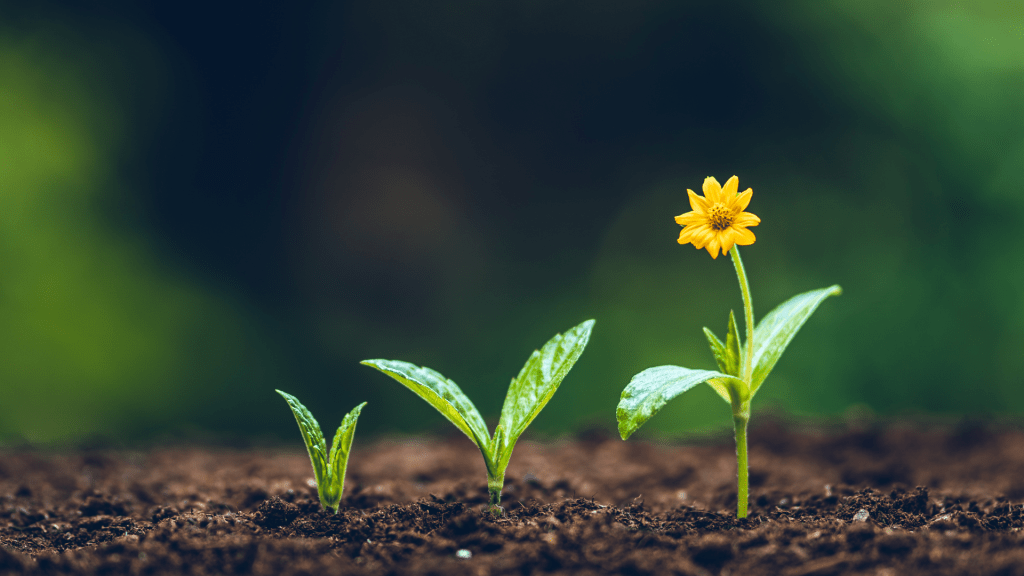Growing Pains Show - A Look Back At The Beloved Sitcom
For many, the mention of the Seaver family brings a warm feeling, a memory of evenings spent laughing with a television family that felt very much like our own. This particular program, which first appeared on screens in 1985, really captured the ups and downs of family life in a way that resonated with many viewers. It showed how a household adjusts when parents shift their roles, and how children grow up, sometimes with a little bit of trouble along the way.
The program, which ran for seven seasons, gave us a peek into the lives of Jason and Maggie Seaver, along with their children, as they faced the ordinary challenges that come with living together. It was, in some respects, a reflection of the changes happening in many homes at that time, especially when it came to parents balancing work and family responsibilities. This focus on realistic, yet often funny, situations helped it become a true favorite.
What made this show so memorable, you know, was its ability to blend humor with heartfelt moments, showing that even when things got a little difficult, family ties could always see you through. It provided a comforting presence for many, offering a sense of connection through its relatable characters and their daily experiences.
Table of Contents
- The Heart of the Growing Pains Show - What Made It Special?
- A Home-Based Family Life on the Growing Pains Show
- Who Were the Faces of the Growing Pains Show?
- Life Beyond the Growing Pains Show - Cast Paths
- How Did the Growing Pains Show Evolve Over Time?
- Behind the Scenes of the Growing Pains Show - Surprising Facts
- Where Can You Still Watch the Growing Pains Show?
- The Enduring Charm of the Growing Pains Show
The Heart of the Growing Pains Show - What Made It Special?
The Seaver household, situated on Long Island, New York, served as the central point for a program that quickly became a household name. It was, in a way, a place where many could see bits of their own family life reflected back at them. The setting itself felt very much like a typical suburban home, making the characters’ lives feel more real and approachable.
At the core of this program was a big shift for the parents, Jason and Maggie Seaver. Jason, a doctor who helped people with their thoughts and feelings, decided to bring his work into their house. At the same time, Maggie, his wife, went back to her job as someone who writes for the newspaper. This change, you know, created a whole new set of situations for the family to figure out.
This shift in parental roles became the very source of the show's name, highlighting the "growing pains" that come with adjusting to new routines and responsibilities. The program had a way of showing these everyday changes with a good mix of lighthearted moments and some more serious discussions, which is that blend that truly made it stand out as a family favorite.
A Home-Based Family Life on the Growing Pains Show
When Jason Seaver moved his work into the house, his daily life took on a new shape. He found himself doing things like preparing meals, tidying up the house, and looking after the children. This change, basically, gave a fresh meaning to his role as a father, as he took on more of the day-to-day care that was perhaps less typical for fathers in television shows of that time.
Maggie's return to her job as a newspaper reporter also brought about its own set of adjustments for the Seaver family. Her working outside the home meant that the family had to figure out how to manage everything with both parents having busy schedules. It really showed how families adapt when the grown-ups take on different responsibilities.
The children, Mike, Carol, and Ben, also had to adjust to these new family rhythms. Their reactions and their own contributions to the household's new way of doing things often created funny or touching moments. For example, there was a time when Ben, the youngest, made his mom, Maggie, feel a little bad about going back to her job. It's almost as if the show captured the real feelings kids can have.
These shifts in the family's setup often led to a variety of situations, some quite funny, others more thought-provoking. The program was good at showing how a family works through these moments, proving that even with some bumps along the way, they could always find a way to support each other. It really highlighted the give-and-take that happens in any family.
Who Were the Faces of the Growing Pains Show?
The people who brought the Seaver family to life were a big part of why the program became so well-loved. Alan Thicke played Jason, the father who brought his work home, and Joanna Kerns was Maggie, the mom who went back to reporting. Then there were the kids: Kirk Cameron as Mike, Jeremy Miller as Ben, and Tracey Gold as Carol. They truly made the family feel real.
Each person in the family had their own distinct personality, which made the interactions between them so engaging. Mike was often the one getting into a little bit of mischief, Carol was the smart and responsible one, and Ben, the youngest, had a knack for causing some trouble but also for being quite sweet. Their differing ways of looking at things often led to relatable family discussions and funny situations.
Beyond the main family members, the program also featured some individuals who would later become very well-known. You know, people like Leonardo DiCaprio and Brad Pitt made appearances. Leonardo DiCaprio, for instance, joined the cast in the program's final season, playing a young person who moved in with the Seavers, and his role was quite important to the story during that time. Brad Pitt also had a smaller part in the program, which is interesting to look back on now.
Life Beyond the Growing Pains Show - Cast Paths
After his time as a young person on the program, Kirk Cameron took a different path in his career. He became a person who hosts talks about his Christian beliefs, which is quite a change from his earlier work. It just goes to show how people's interests and callings can shift over the years.
Tracey Gold, who played Carol, also had some personal experiences that became public. She shared that writers on the program included more jokes about her weight after she gained some. This, you know, highlights some of the pressures that people in the public eye can face, especially when they are growing up in front of an audience.
Alan Thicke and Joanna Kerns, who played the parents, continued their work in the entertainment world after the program finished its run. They both had various other acting roles and projects, showing their continued dedication to their craft, even after being part of such a well-known family program.
Leonardo DiCaprio's appearance in the seventh and final season was quite significant. He played a young person named Luke Brower, and his time on the program gave a glimpse of the remarkable talent he possessed. It's almost as if you could see the beginnings of his future success in those episodes, before he went on to become an international superstar in movies.
Brad Pitt's involvement, while not as extensive as Leonardo DiCaprio's, was also a notable moment for fans looking back. His time on the program was a small part of its history, but it's still a fun fact for those who follow the careers of famous people.
Chelsea Noble, who is married to Kirk Cameron, also made appearances on the program. Her presence added another layer to the show's connections, as it brought real-life relationships into the on-screen family dynamic, which is that kind of detail that can make a show feel more connected to its audience.
How Did the Growing Pains Show Evolve Over Time?
The program first aired in September 1985 and continued to be a part of people's lives until April 1992. Over those years, it produced 166 individual stories, spread across seven seasons. That's a good many years for a program to stay on the air, showing its lasting appeal to people who watched it.
The idea for the program, in some respects, drew inspiration from other successful family programs of its time, such as "The Cosby Show." However, "Growing Pains" quickly found its own unique voice and style, focusing on the specific challenges and humorous situations that arose from the Seaver family's particular setup. It really carved out its own space in the world of television.
As the program continued, the storylines developed, reflecting the growth of the children and the ongoing adjustments of the parents. There were moments, for instance, when the creators tried to introduce new elements to keep the program fresh, such as bringing in new characters in later seasons. This was, you know, a way to keep the stories moving forward and to maintain interest from the audience.
Behind the Scenes of the Growing Pains Show - Surprising Facts
The program, like many others that run for a good while, experienced various changes and developments behind the scenes. Sometimes, there were discussions about how to keep the stories fresh or how to make sure the program continued to connect with its viewers. These kinds of internal considerations are pretty typical for long-running shows.
When it came to how people felt about the program, it generally received what could be called moderate feedback. It was also recognized by some in the industry, receiving a nomination for a Primetime Emmy in 1992. This kind of recognition, you know, speaks to the quality of the work put in by the people making the program.
The idea for the program came from Neal Marlens, who helped bring the Seaver family to life. Later on, other people like Dan Guntzelman and Steve Marshall were involved in creating a related program called "Just the Ten of Us," which was a spin-off. It really shows how creative ideas can branch out and grow.
Where Can You Still Watch the Growing Pains Show?
For those who wish to revisit the Seaver family or experience their stories for the very first time, the program is still available to watch today. You can, for example, stream it on services like Pluto TV and Xumo Play. These platforms offer the program for free, though they do include advertisements, which is a pretty common way to watch things these days.
If you prefer to own the episodes, you also have the choice to buy them as a digital download. You can find this option on places like Amazon. This means you can have the program saved to your own collection and watch it whenever you like, without needing an internet connection to stream it.
So, whether you want to watch a few episodes for free with some ads or own the whole series, there are ways to connect with the Seaver family's stories. It's almost like the program has found a new life in the current ways people consume entertainment, allowing its heartfelt moments to reach new and old viewers alike.
The Enduring Charm of the Growing Pains Show
A big part of the program's lasting appeal is its opening song. That familiar tune brings back a lot of good feelings for people who watched it when it first aired. It's almost like a musical key that unlocks memories of a simpler time and the happy feelings associated with sitting down to watch the Seaver family.
The program, which aired from the middle of the 1980s into the early 1990s, really stood out as one of the most important family programs of that time. It helped define what a family program could be, showing real-life situations with a blend of humor and warmth. It truly left a mark on television history.
Its continued appeal means that new people can discover it, and those who watched it years ago can find comfort in re-watching it. It offers a kind of pleasant escape, a chance to revisit a family that, in a way, felt like a part of our own lives.
The program is remembered for its heartfelt moments and the fun it brought into homes. It provided a picture of a typical, upwardly mobile family, facing everyday situations with a good spirit. It really was, you know, a program that made you feel good about family life.

hand nurturing young baby plants growing in germination sequence on

Module 10: How Plants Grow - Gardening Express Knowledge Hub

growing plants - The Peace Naturals Project